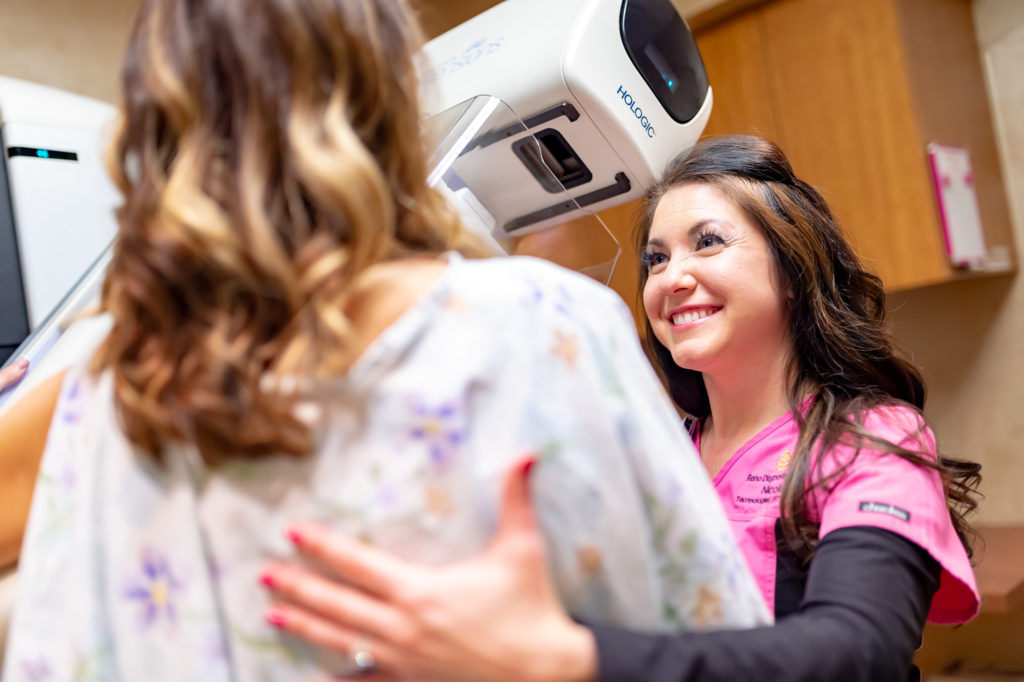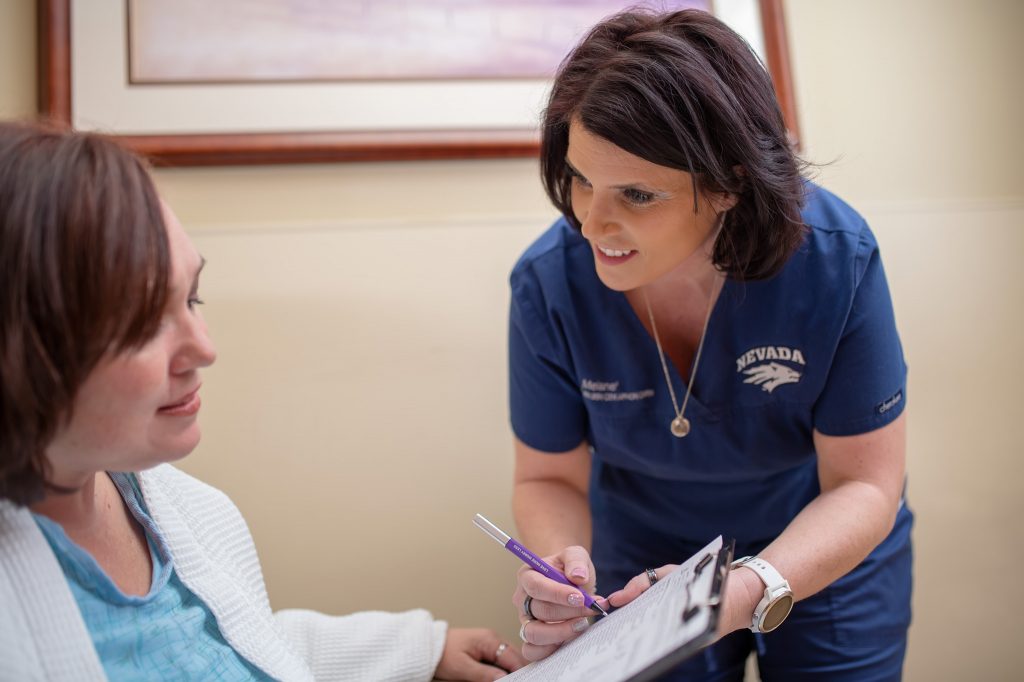3D Mammography (Digital Breast Tomosynthesis) exam is similar to a 2D mammogram. The difference between the two is that in a 3D exam, the breast is scanned from multiple angles in layers (approximately 1 mm thick), which provides the radiologist a deeper look within the breast tissue.
This exam is extremely helpful for those with dense breast tissue, which makes cancer harder to detect on a 2D or conventional mammogram. Learn more about imaging for dense breast tissue with our Automated Breast Ultrasound technology.
3D mammography is approximately 40% more sensitive in finding early breast cancer and results in 30% fewer callbacks compared to conventional 2D mammography.
Preparation and what to expect for all mammograms:
- No dusting powders or deodorant. Underarms should be free of chemicals.
- If you experience monthly breast tenderness, schedule your mammogram when you are least sensitive.
- A board-certified technologist will position your breast for the best placement to acquire an image.
- Once images are taken, and the exam is complete, you may return to work.
- Most results will be delivered by your healthcare provider the same day.

Frequently Asked Questions:
What is 3D mammography (also known as tomosynthesis) and how does it compare to standard 2D digital mammography?
2D
or conventional digital mammograms provide the Radiologist with a 2D
image to evaluate the breast. This can be limiting due to overlapping
layers of tissue. 3D mammography is FDA approved and delivers a series
of detailed breast images. This allows the Radiologist to better
evaluate your breasts layer by layer, eliminating the problem of
overlapping breast tissue, which can obstruct the view of breast cancer.
What is the radiation exposure of 3D mammography compared to 2D?
The radiation exposure for 3D is comparable to a conventional 2D mammogram and within federal limits.
Can I get it if I have breast implants?
3D mammography is a safe and effective exam for women with implants. 3D provides added benefit to “seeing” around implants.
Will I notice a difference when the technologist performs the exam?
No,
the same views are performed for both standard 2D and 3D screening
mammograms. Two views are performed on each breast. Patients with
implants receive three views on each breast.
Is there more compression on a 3D mammogram?
No, the compression is comparable to a 2D mammogram.
Will 3D mammography help reduce the need to be called back for additional imaging?
Yes, studies suggest 3D mammography has been proven to reduce callback rates up to 30-40%.
What do your Radiologists recommend for me? 2D or 3D?
We recommend that every woman receive a 3D mammogram, especially for those with heterogeneously and extremely dense breast tissue. National studies have shown 3D mammography detects 40-50% more cancers compared to traditional 2D mammography. After our first year performing 3D mammography, RDC has experienced a 35% decrease in patients called back for additional imaging.
How much does it cost? Do I have to pay for it?
Please refer to your check-in sheet for details on the specific coverage with your insurance carrier/plan.
Do I have to decide if I want 3D before I schedule my appointment?
Since
2D and 3D mammogram exams take the same amount of time, we take the
opportunity to explain the benefits of 3D, once you check in. This also
allows you to discuss your questions or concerns with your technologist
prior to your exam.


